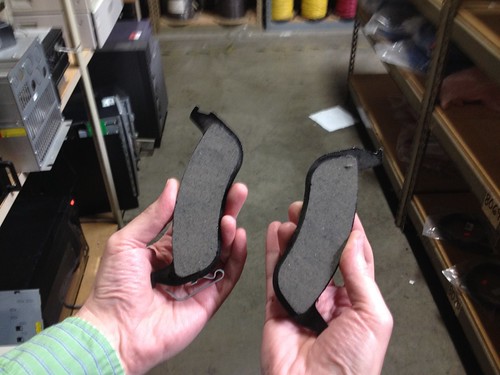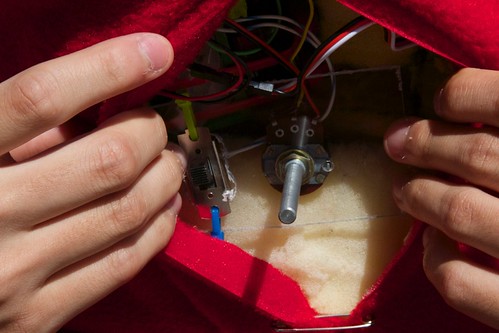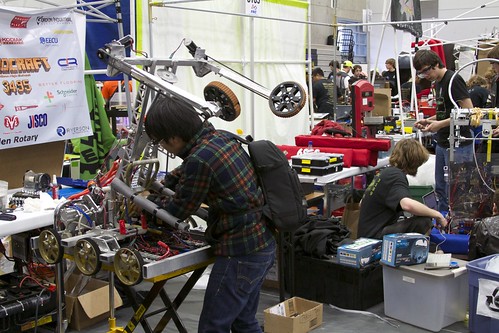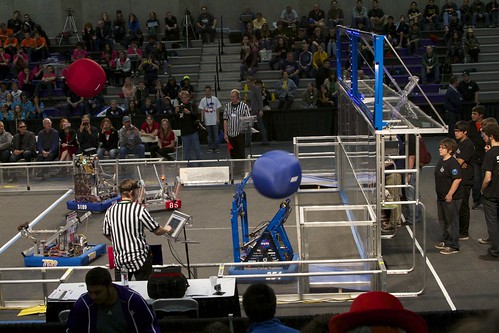
Anton wrote in to ask:
I want to purchase your Larson Scanner kit but need to be able to run it from household current … is there a converter that you would recommend?
Since the Larson Scanner normally runs from 3 V DC, a regulated 3 V power supply can be hooked up in place of the 2xAA battery box. However, 5 V power supplies (like this one) are much more common, and the circuit can be run from 5 V with only minor changes. if you replace the nine 16 ohm resistors in the Larson Scanner kit with 120 – 150 ohm resistors, you can power it from 5 V directly.
Another related question we occasionally get is how to run the Larson Scanner with green LEDs. (Note: by green, we mean “pure” green LEDs which have a forward voltage of about 3 V. Older style yellow-green LEDs with a forward voltage of ~2 V can be used as drop-in replacements for the red ones.)
If running off of battery will work for you, this is an even simpler change: merely replace the 3 V battery holder with a 4.5 V one, such as a 3xAA. It is a happy coincidence that the circuit can run with red LEDs at 3 V or green LEDs at 4.5 V using the same 16 ohm resistor value. So how about running a green Larson Scanner from a 5 V power supply? Replace the nine 16 ohm resistors with 39 ohm resistors and you should be good to go.
You can find the documentation for the Larson Scanner and more stories about modding it on our wiki. We’d love to hear about any mods you do to the Larson Scanner in the comments or see pictures in the flickr pool.


















